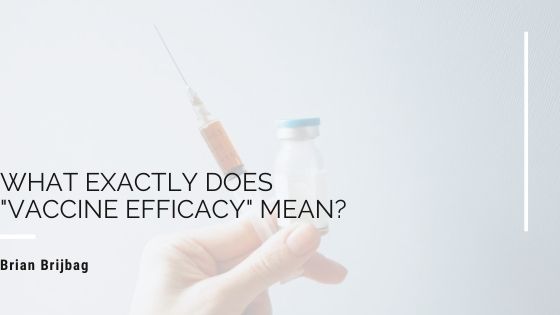Pfizer, Moderna, and AstraZeneca have all released studies showing their Covid-19 vaccines have extremely high efficacy. As more and more drug manufacturers clamor to produce their own answer to the pandemic, this language will be commonplace. But this language might not make sense to many people.
The Language
The common understanding is that ‘efficacy’ has the same meaning as ‘effectiveness’ but this isn’t accurate. “Vaccine Efficacy” rates how well the vaccine reduces the number of cases in a clinical trial. ‘Effectiveness’ is very hard to communicate effectively – would ‘effective’ mean that it prevents 90% of an infection? Because of the confusion that could arise, it’s simplest to be specific and use ‘vaccine efficacy’ to clearly state the reduction in disease spread.
The Science
The most recent vaccine study, released by AstraZeneca, showed 70% efficacy in their product. Compared to the 90% rates promised by Pfizer and Moderna, you might think that 70% is a failure, but this is far from true.
The US Food and Drug Administration is requiring a 50% efficacy in clinical trials, which the most recent study clears easily. The World Health Organization has the same minimum but has stated it would prefer higher.
Very few vaccines can reach the 90% efficacy that Pfizer and Moderna have promised. In fact, the most recommended vaccination for adults, the flu vaccine, is typically 40%-60% effective. Even a modest amount of protection can prevent millions of deaths and should be sought after.
The Conclusion
No vaccine will reach 100% efficacy. For some people, a vaccine might not take. For other people, the vaccine’s protection may unexpectedly fade. These are simply difficulties that the medical field has to deal with in protecting the public. These outliers who slip through the cracks are the reason why vaccinating the public should be as widely provided as possible, granting the most vulnerable populations among us a buffer of vaccinated crowds who are less apt to spread the illness.

